Nigel Worboys shows you how to transform a scruffy set of tables
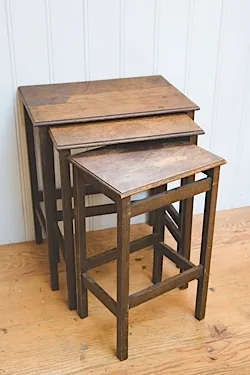
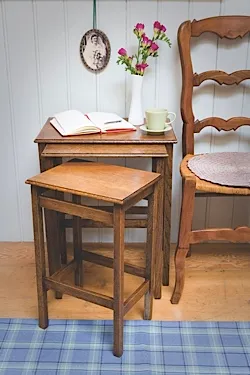
With nests of tables back in vogue – and good wood examples costing anything upwards of £100 – why not find your own and restore them? This rather scruffy set of three, made in solid oak and dating from the 1930s, boasts a good simple shape and came from the Ardingly Antiques Fair for the modest price of £40. Although basically sound, the tops of all three tables were stained, scuffed, patchy and tired and the legs were covered in a dark heavy varnish, which needed stripping. As a general rule you should try to preserve as much of the original patina as possible, so it’s a good idea to try a gentle reviver (a pre-blended mix of oils and cleaners) first and only resort to heavy-duty stripping if this doesn’t work. Because these tables were covered in patchy varnish, a wood stripper, such as Nitromors, was in fact needed. This is brushed on with an old paintbrush and removed with a scraper and plenty of elbow grease. The next stage of the process is to neutralise the surface with white spirit. Sandpaper should only be used as a last resort as it can damage the wood, but again these tables needed fairly heavy handling and the last residues of varnish had to be removed with a fine-grade sandpaper, rubbed gently over all surfaces in the direction of the grain. The tables were then ready for the final French polish and wax.
What you will need
- Reviver or varnish/paint stripper
- Methylated spirit
- White spirit
- 0000 and 00 wire wool
- Cotton cloth
- Button polish
- Water-based stain
- Lint pad to make a French-polish rubber
- Fine-grade sandpaper
- Wax polish
- Paintbrush
- Paint-scraper
- Protective gloves
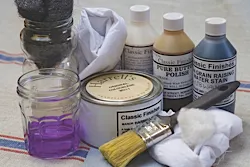
Note: only carry out restoration on items worth a few pounds rather than hundreds. Always consult an experienced restorer for more valuable pieces
Caution. Follow suppliers’ instructions. Wear proper protective gloves, safety glasses, etc, and carry out restoration in a well-ventilated room away from pets and children.
Six simple steps
1
Cover all three tables with paint/varnish remover.

2
Strip it off with a scraper and repeat as necessary until the varnish has gone – it may take more than one go.

3
Neutralise the stripper with white spirit, then clean with methylated spirit using 00 wire wool. Repeat steps 1-3 on the base and legs.
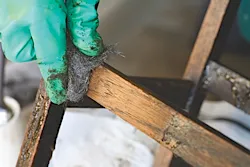
4
Lightly rub over with fine-grade sandpaper to even out and remove last remnants of stain or varnish.
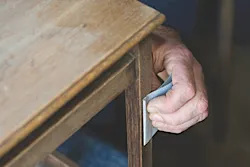
5
Apply a light stain all over and allow to dry.
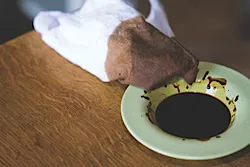
6
Make a French polish rubber by wrapping a ball of lint, soaked in French/button polish, in a piece of pure cotton. Before applying the polish, ensure the surface of the rubber is flat and damp (but not wet) with polish. Build up a finish by gently moving across the surface in small circular motions. Repeat several times, allowing to dry between coats. Then, if required, cut back gently with 0000 wire wool. Wax to finish, using a clean, soft, cotton cloth and beeswax polish.
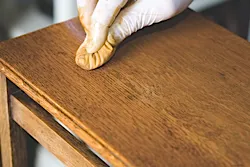

Nigel Worboys has been dealing in antiques since 1978 and specialises in clocks. His shop and restoration business can be found at 86 London End, Beaconsfield, Bucks. 01494 673055; worboysantiques.co.uk